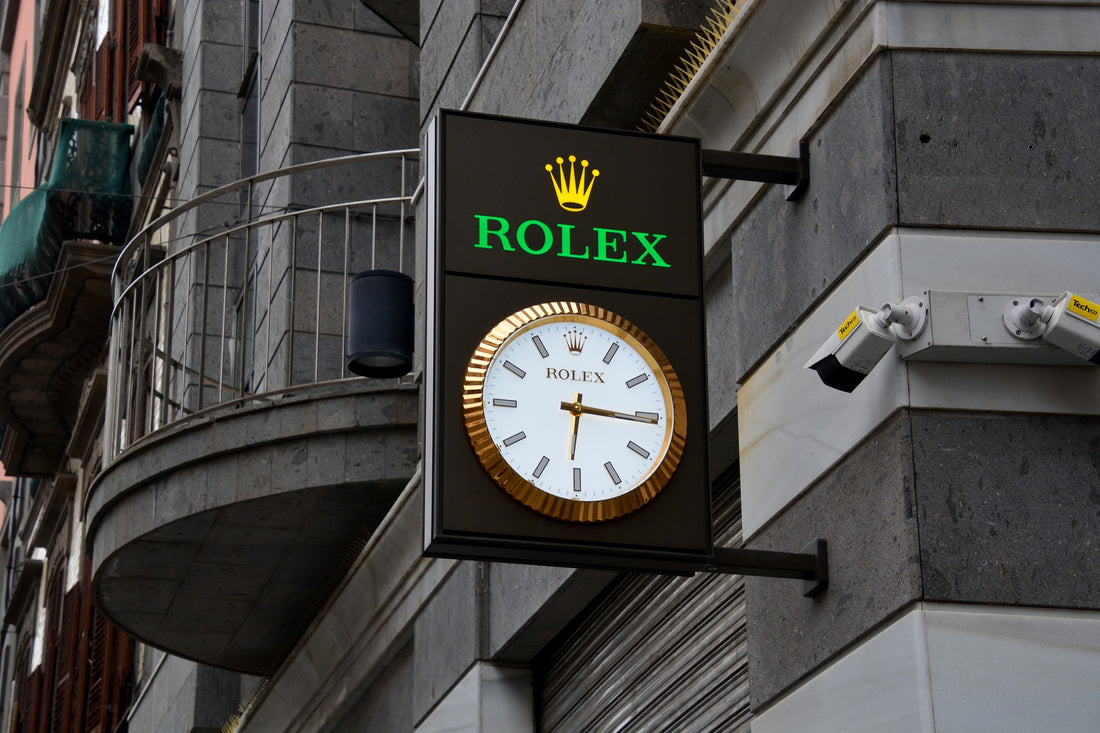In the early 20th century, a visionary named Hans Wilsdorf embarked on a journey that would redefine timekeeping and establish a legacy of excellence. At just 24 years old, Wilsdorf founded Wilsdorf & Davis in London in 1905, alongside his brother-in-law, Alfred Davis. Their mission was clear: to create high-quality wristwatches in an era dominated by pocket watches.

Wilsdorf's unwavering belief in the potential of wristwatches led him to source precise movements from Swiss manufacturer Hermann Aegler. These movements were encased in elegant designs, appealing to both functionality and style. In 1908, seeking a brand name that was easy to pronounce in any language and short enough to grace the dial, Wilsdorf registered the trademark "Rolex." He believed the name sounded like a watch being wound, encapsulating the essence of his creations.
The outbreak of World War I brought challenges, including heavy taxation on luxury imports in England. In response, Wilsdorf relocated the company to Geneva, Switzerland, in 1919, a city renowned for its watchmaking heritage. This move allowed Rolex to flourish, embracing the Swiss commitment to precision and craftsmanship.

Rolex's innovative spirit shone brightly in 1926 with the introduction of the Oyster, the world's first waterproof and dustproof wristwatch. This groundbreaking design featured a hermetically sealed case, offering unparalleled protection for the movement. To prove its reliability, Rolex showcased the Oyster in aquariums at points of sale and, in 1927, equipped British swimmer Mercedes Gleitze with an Oyster as she swam the English Channel, demonstrating its durability in the harshest conditions.
In 1931, Rolex revolutionized watchmaking again by patenting the Perpetual rotor, a self-winding mechanism that harnessed the movement of the wearer's wrist. This innovation led to the creation of the Oyster Perpetual, setting a new standard for automatic wristwatches.
The 1940s and 1950s marked a period of significant advancements for Rolex. In 1945, the company introduced the Datejust, the first wristwatch with an automatically changing date function, further cementing its reputation for innovation.
In 1953, Rolex launched the Submariner, the first wristwatch designed to be waterproof up to 100 meters (330 feet), catering to the needs of professional divers and setting the standard for dive watches.
Hans Wilsdorf's relentless pursuit of perfection and his visionary approach laid the foundation for Rolex's enduring success. Today, the brand stands as a symbol of precision, innovation, and timeless elegance, a testament to Wilsdorf's dream that began over a century ago.
Rolex Oyster

Introduced in 1926, the Rolex Oyster was the world's first waterproof wristwatch, featuring a hermetically sealed case that protected the movement from dust and water.
Rolex Datejust

Launched in 1945, the Datejust was the first wristwatch with an automatically changing date function, showcasing Rolex's commitment to innovation.
Rolex Submariner

Released in 1953, the Submariner was the first wristwatch designed to be waterproof up to 100 meters, setting the standard for dive watches.
Hans Wilsdorf

The visionary founder of Rolex, Hans Wilsdorf, established the company in 1905 with a mission to create high-quality wristwatches
Rolex Oyster Perpetual

In 1931, Rolex introduced the Oyster Perpetual, featuring a self-winding mechanism with a Perpetual rotor, revolutionizing automatic wristwatches.
These iconic models and the visionary behind them have played pivotal roles in establishing Rolex as a symbol of excellence in watchmaking.
Rolex's journey from a London-based startup to a global symbol of luxury and precision is a testament to Hans Wilsdorf's visionary leadership and relentless pursuit of excellence. Each innovation, from the groundbreaking Oyster case to the pioneering Perpetual movement, has set new standards in watchmaking, solidifying Rolex's place at the pinnacle of horological achievement.
